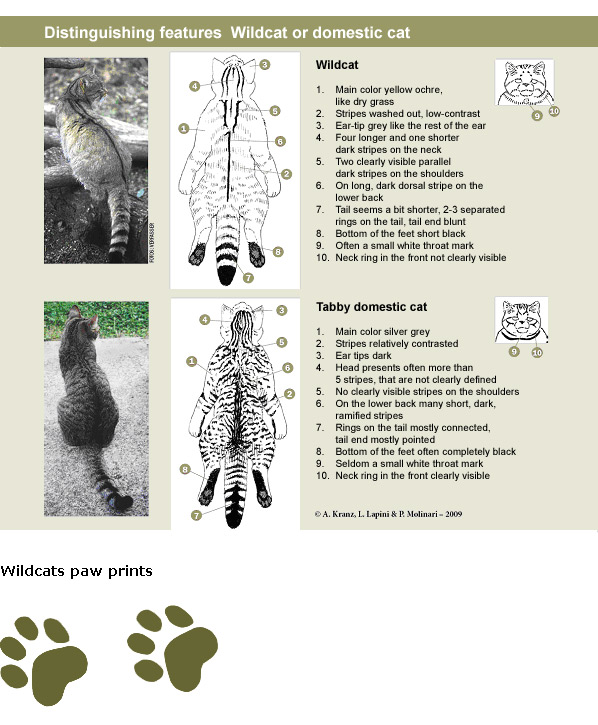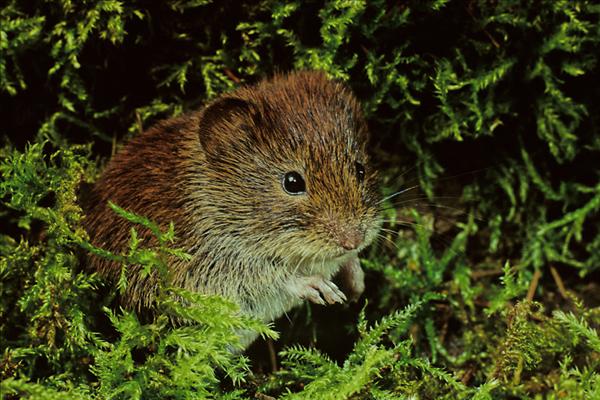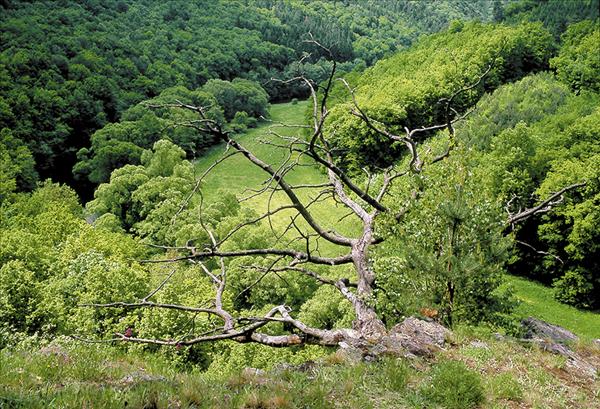Cat and mouse - Wildcat preys
Wildcats are specialized hunters. They always hunt individually, unlike lions or wolves in packs. This is why they only attack preys that are smaller than them. Depending on the type of cat, they often lie in wait under the cover of the night for their prey, and then take them by surprise in a quick attack.
Mice, and in particular voles, are the main preys of wildcats in Europe. Wildcats also switch to other preys, especially when this "basic food” runs short. Depending on the offer, even rabbits, birds, lizards and frogs can appear on their menu. Hares and deer fawns are seldom targeted as food analyses show.
They are satisfied with carrion only in times of need. Long winters with lots of snow are difficult times for wildcats. Through 20cm of thick snow, not only mice are difficult to reach. Because of their heavy "paw imprint/impact”, wildcats cannot run on snow any more and thus their movements and their hunting success are limited. This is the reason why wildcats do not occur in areas with lasting thick snow - these animals do not hibernate, and depend on constant hunting successes.
Mice, and in particular voles, are the main preys of wildcats in Europe. Wildcats also switch to other preys, especially when this "basic food” runs short. Depending on the offer, even rabbits, birds, lizards and frogs can appear on their menu. Hares and deer fawns are seldom targeted as food analyses show.
They are satisfied with carrion only in times of need. Long winters with lots of snow are difficult times for wildcats. Through 20cm of thick snow, not only mice are difficult to reach. Because of their heavy "paw imprint/impact”, wildcats cannot run on snow any more and thus their movements and their hunting success are limited. This is the reason why wildcats do not occur in areas with lasting thick snow - these animals do not hibernate, and depend on constant hunting successes.
Wildcat territories
Wildcats keep to their territory. However, young male cats stroll far away, particularly during the mating season. The strolling areas of females are, depending on the habitat, diversely wide, often between 300 and 600 ha. Males need an area of 1.000 to 3.000 ha.
There they mostly look for areas at the edge of the forest. Small clearings, meadows hidden in the forest and undisturbed forest edges with rich hedge structures are the most important elements of their habitat - here cavort all the various small mammals: mice from forests, forest edges and open land meet there and create a secure food supply. Studies of wildcats fitted with mini-transmitters show that wildcats are definite "border crossers” who like to draw back into the shelter of the forest, but also like to use the richly laden tables of the open land.
There they mostly look for areas at the edge of the forest. Small clearings, meadows hidden in the forest and undisturbed forest edges with rich hedge structures are the most important elements of their habitat - here cavort all the various small mammals: mice from forests, forest edges and open land meet there and create a secure food supply. Studies of wildcats fitted with mini-transmitters show that wildcats are definite "border crossers” who like to draw back into the shelter of the forest, but also like to use the richly laden tables of the open land.





